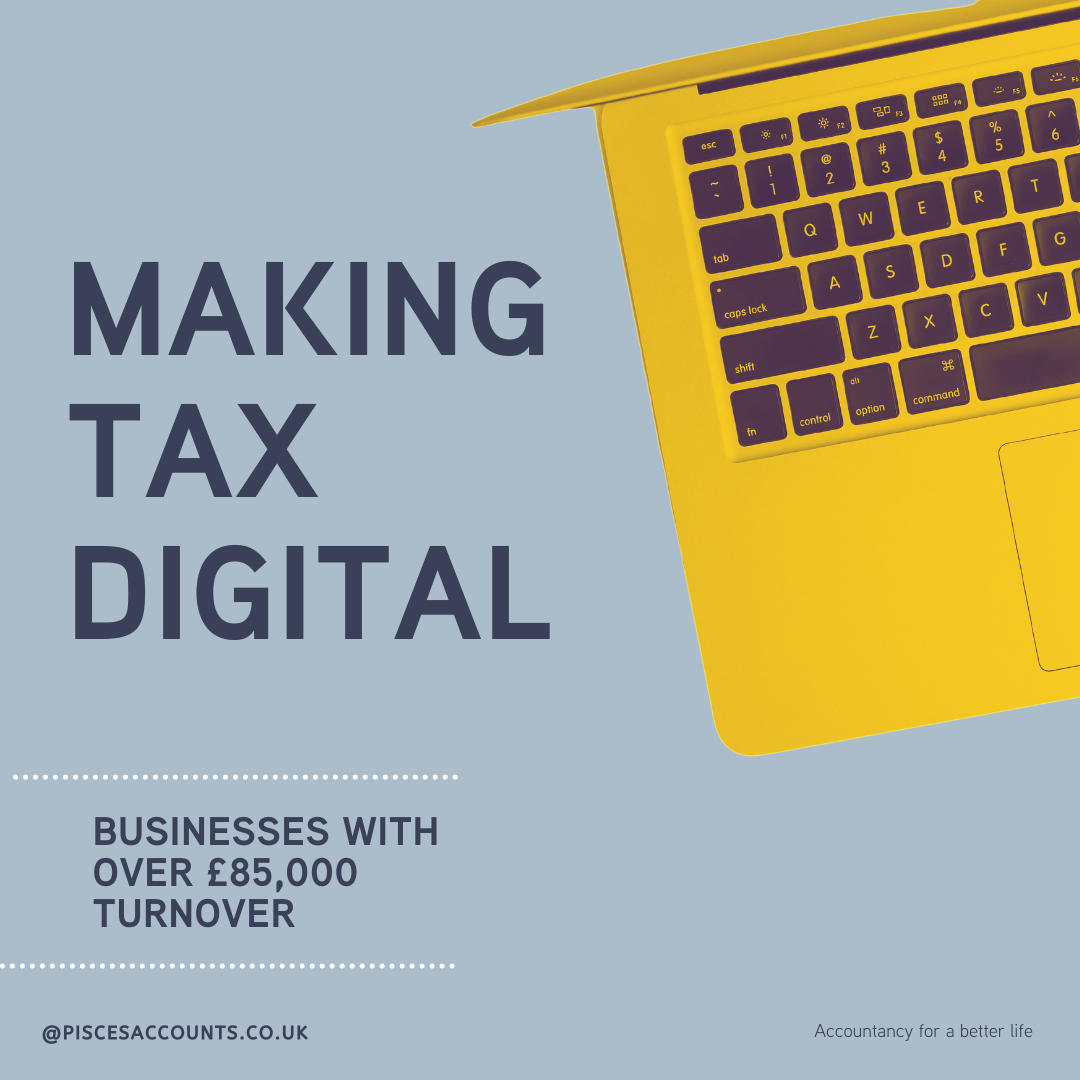Do I need to register for VAT?
You need to register for VAT when the sales for your business goes above £85,000 for any 12-month period. You can choose to register before you get to that amount if you want to, this is called a voluntary registration.
But once you are you registered you need to charge vat on all the invoices that you send to your customers and pay and submit vat returns to HMRC every three months.
Once you are registered for VAT you will need to keep your company books digitally, that means that you should use software to prepare and submit the vat returns to HMRC. You can keep digital copies of your invoices, receipts and expenses. These digital copies can be photos taken from your phone or scanned images of the invoice or receipt.
The process to register for VAT can be done on the HMRC website. You will need to have your company details, the company bank account details and to choose a month that you want the vat returns to be submitted.
These vat return periods are every quarter as shown below.
January, April, July and October
February, May, August and November
March, June, September and December.
If you sign up for a vat period and later decide you want to change it you want to.
Vat should only be charged on the sales that you make in the UK. Since Britain came out of the European Union vat is only charged on qualifying UK sales. So if you are dealing with a client in the EU or America you no longer have to charge vat on your invoice.
Standard VAT Scheme
The Standard vat scheme is the default one that you are registered on when you first register for VAT. The vat you pay on the standard vat scheme is the difference between what you charge your customers in VAT and what you pay in VAT on your expenses.
There are many rules on what you can and can’t claim vat on. The wages that you pay your staff don’t have VAT on them, any payment to HMRC or the Government do not have vat on them. So payments of Corporation Tax, PAYE taxes or Business Rates are themselves not expenses that you can claim vat on.
If you are going to reclaim VAT you will need to have a vat receipt or invoice for the expense that you are claiming vat back on. It will need to show the business name, the vat number and the amount of vat that you are claiming back.
Generally if the receipt or expense invoice does not have this information on you will not be able to reclaim the vat on the expense. If you are unsure if you can claim the vat back on an expense please get in touch for help.
Flat Rate VAT Scheme
The flat rate vat scheme is one that is designed to make record keeping for small business easier to do. If you choose to register for this scheme you will pay vat to HMRC at a percentage on the gross amount of your invoices.
This maybe a percentage between 12% and 16.5% depending on what work you do and the amount of expenses that you have. The 16.5% rate is used for businesses that are Limited Costs Traders.
That is if you have a small amount of expenses you will have to use this percentage.
It is normally better since this new category for the flat rate percentages for most business to use the standard vat scheme.
When do you charge VAT?
You will need to charge VAT on all your sales that you make in the UK. That is if you sell your services or goods in the UK you will need to charge vat on those invoices. There are quite complex rules if you are selling to companies that are outside of the UK.
The general rule for deciding if you need to charge vat is where your customer is based. If the customer is based in the UK it is inside UK VAT and you need to charge VAT on your invoice. If your customer is outside the UK you do not need to charge vat.
Since the UK came out of the European Union on the 1st of January 2021, vat is no longer charged on sales to the EU. The sale will be to the European Union if the business you are trading with is based in country in the EU. The place of supply is where your client is based if you are selling services to a business.
If the client is based in the UK you need to charge vat. If the client is based outside of the UK including EU and America you will not need to charge vat after the 1st of January 2021.
Making Tax Digital
Making tax digital is now an obligation for all vat registered businesses. You need to use and submit compatible software for preparing and submitting your vat returns. You will need to use software such as Quickbooks or Xero for doing this. The old HMRC portal for submitting vat returns has now been switched off.
You need to keep your records digitally in the software storing your bank details, sales and expenses. The sales and expenses can be stored as a digital attachment in the software if you don’t want to keep any old paper copies.
One of the easiest ways to do this is to use a expenses software such as Dext or Hubdoc if you use Xero. These will keep copies of the receipts for you and attach them in to your accounts.
What do I need to do?
Generally when you start your business it may be better to register for VAT straight away. If you are dealing with business customers they will be registered for VAT themselves and any vat you charge they will reclaim in their VAT return.
It will probably be better to use the standard vat scheme for you registration this will make sure that if you are paying vat you can reclaim that vat back in your vat return.
Once you have decided to do this you need a software to keep all your records. Quickbooks or Xero would make this a lot easier to send out invoices and keep details of your expenses. This will not only help you with submitting the vat returns but also help you keep an eye on the tax you need to pay for your business and help you chase payment for the work that you have done.
Next steps
If you need help registering for VAT or for submitting your vat returns please arrange a call so we can discuss how we can help you further.





